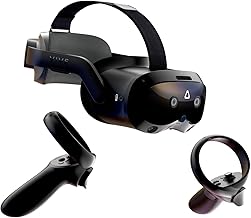When we got our first look at US Army soldiers testing Microsoft's modified HoloLens 2 last year, it still looked very much like the commercial edition, with some additional sensors attached.
Today, the prototype Integrated Visual Augmentation System (IVAS), produced under an initial $480 million contract, looks much more like battle-ready technology, with a much larger visor and sensors bundled in a rugged-looking, beige enclosure.
Now that the US Army has extended a five-year, $21 billion contract (with a possible five-year extension) to Microsoft to produce approximately 120,000 military-grade HoloLens 2, Microsoft has revealed some additional details from behind the scenes.
The IVAS prototype is the product of two years of close collaboration between vendor and customer, where Microsoft team members participated in several week-long boot camps and the Army was exposed to Microsoft's "user-centric" design approach.
"It's unusual for the government to have gone on this journey with us," said Alex Kipman, technical fellow at Microsoft and HoloLens inventor, in a statement. "I give infinite credit to the Army for their level of growth mindset. It was the right people with the right attitude at the right time to take the leap of faith with us."
The team logged nearly 80,000 hours of soldier feedback by February 2021, which included four rounds of testing in the middle of the COVID-19 pandemic, where the project members maintained contact via Microsoft Teams. Soldiers tested the headsets mostly at Fort Pickett, Virginia, with additional testing in Puerto Rico and Alaska to account for more extreme climates.
Ultimately, Microsoft cycled through dozens of prototypes and refined them based on user input. While Microsoft met Army requirements for hardware to resist battlefield conditions in early prototypes, soldier feedback showed that additional design adjustments were needed. For example, early sensor placement impeded the ability of soldiers to aim their rifles, and initial versions of the device limited their peripheral vision. An early version of a computer pack included a dial that, while easy to operate, was prone to breakage as soldiers crawled through rough terrain.
The end result is a convergence of HoloLens AR technology with thermal imagery, sensors, GPS technology and night vision capabilities that will provide soldiers with 3D images and maps as well as a compass in their field of view.
"Soldiers will be able to rehearse and train in more realistic scenarios using augmented reality to prepare themselves for what they are walking into," said Master Sgt. Marc Krugh, a senior enlisted advisor working on the project team. "Inevitably, IVAS is going to save lives. That's our main focus – bringing our men and women in arms back home."
The 3D maps will enable the US military to plan missions and, in the future, see the view of the battlefield from the enemy's point of view. Soldiers will also be able to determine the position of their fellow platoon members using location information transmitted over a secure network. When paired with their weapon sight, soldiers will be able to use their scope to peek around corners safely while viewing the scope view in their IVAS headset.
"Think about giving the soldier instantaneous situational awareness, not only of their surroundings, but also of the proximity of mission-critical people, places, and things. This will have a profound impact on soldier safety and a marked reduction in friendly fire and other types of incidents," said David Marra, IVAS program director for Microsoft.
While two-plus years sounds like a long time, it's a sprint compared to other military contracts, which can take six to ten years to develop a final product. However, IVAS was developed with Microsoft under an "Other Transaction Authority" agreement, which allowed for flexibility in development and testing. The reviews of the results at this point are glowing.
"Microsoft has done a really good job of trying to understand what the government needed and also to add some things into it that we didn't know we needed or didn't even know were in the realm of possibility," said Krugh.
Average civilians may never get to place an IVAS-edition HoloLens on their heads, but they'll eventually enjoy the fruits of Microsoft's labor as a result of what the company has learned about design, development, and iteration through this process.
Cover image via Microsoft































Comments
Be the first, drop a comment!